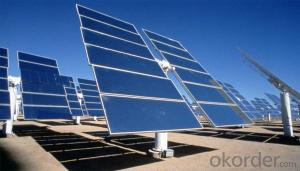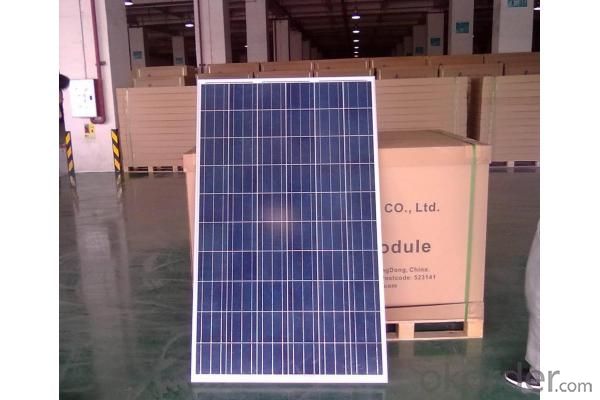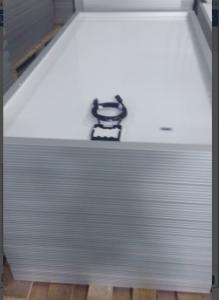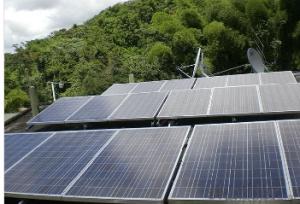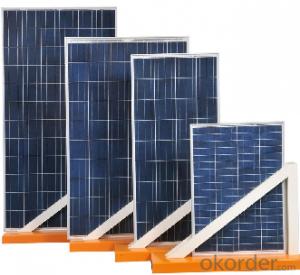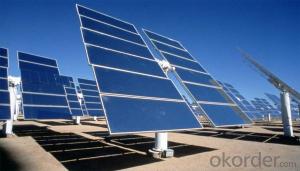CE and TUV Approved 10W Poly Solar Panel - Solar Panels Canberra
- Loading Port:
- Shanghai
- Payment Terms:
- TT OR LC
- Min Order Qty:
- 10000 watt
- Supply Capability:
- 20000000 watt/month
OKorder Service Pledge
OKorder Financial Service
You Might Also Like
Specification
1. The Introduction of Solar Module
Solar modules use light energy from the sun to generate electricity through the photovoltaic effect. The majority of modules use wafer-based crystalline silicon cells or thin-film cells based on cadmium telluride or silicon. The structural (load carrying) member of a module can either be the top layer or the back layer. Cells must also be protected from mechanical damage and moisture. Most solar modules are rigid, but semi-flexible ones are available, based on thin-film cells.
2.Technical Parameter
Type | CNBM Solar Polycrystalline Series |
Materials | Silicon |
Guarantee | 12 yrs free from defects in materials and workmanship No less than 90% within 10yrs and no less than 80% within 25yrs TUV(IEC61215&IEC61730), CE, UL |
Application | Photovoltaic/ solar/ green energy/ energy saving |
Descriptions | 1.High efficiency crystalline silicon solar cell. Even if under the weak light, the solar module can produce maximum power output. 2.Tempered glass (toughened glass): Anti-reflecting coating and high transmission rate glass increase the power output and mechanical strength of solar module. 3. EVA and TPT: Using high quality EVA and TPT to prevent destroying and water. 4. AI frame: Without screw, rner connection. 6 holes on the frame can be installed easily. 5. Junction box: Multi function junction box with water proof. 6. Long lifetime: ≥25 years; Less power decrease. 7. Good performance of preventing from atrocious weather such as wind and hails. 8. Resisting moisture and etching effectively, not effected by geology. 9. The certificate issued by international authority: UL, TUV, IEC, CE.
|
Packaging Details: | 26pcs/pallet, 28pallets/ 40HQ Our solar panels are packed in cartons, and then pallet. Shipping by sea or by air are both ok, it up to customer’s chose. We’d like to inquiry the freight cost for customer after be informed exact quantity and destination address. |
3. Application and Pictures of Products
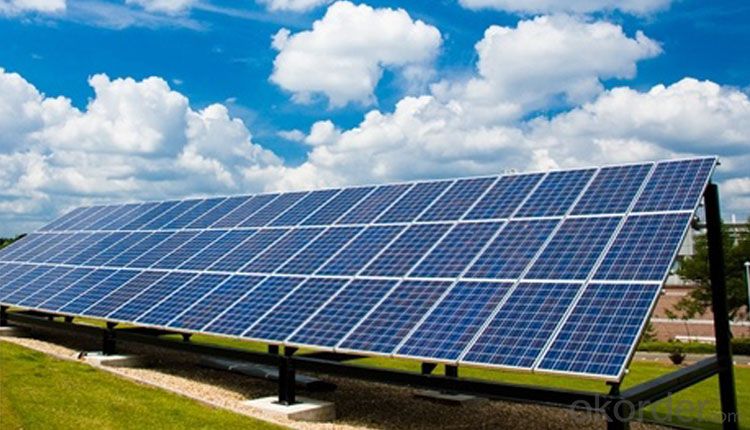
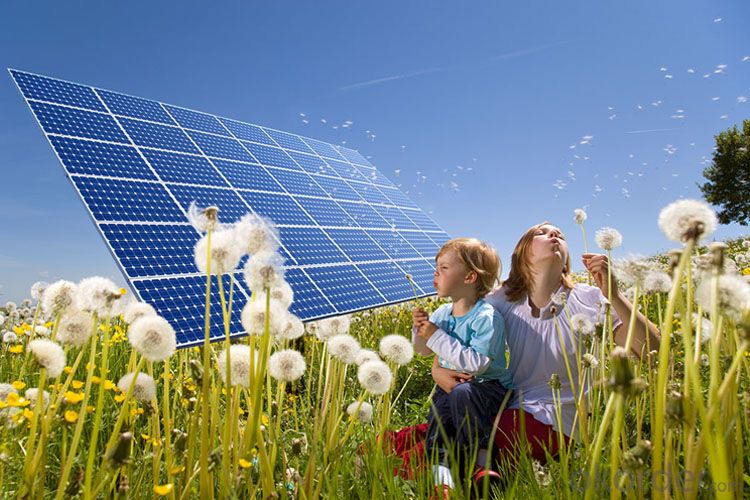
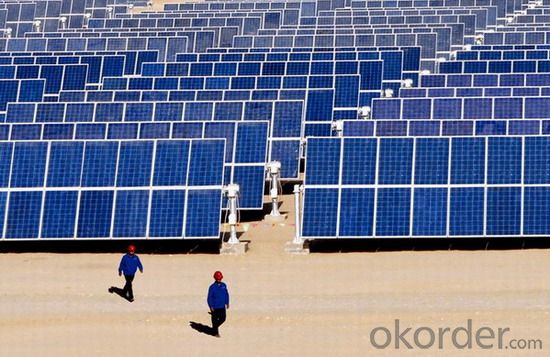
4. How to Work
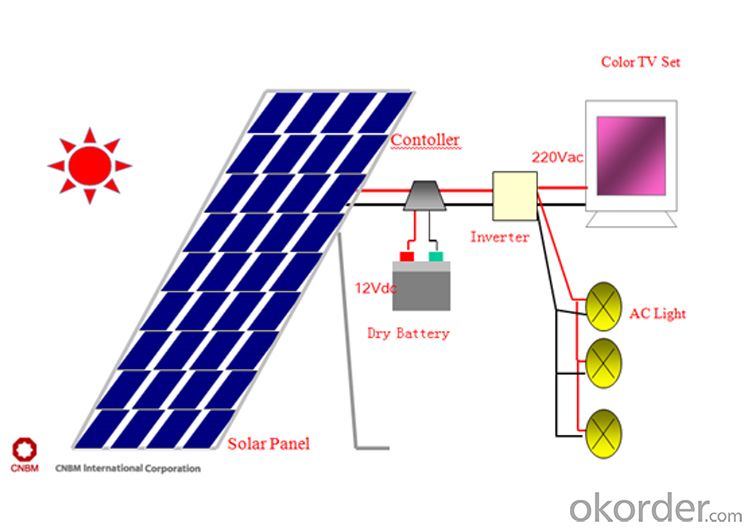
5. Packing Details

6. FAQ
Q1: What is the business type for the company?
A1: We are one of the biggest manufacturers in zhejiang.Chnia. Which is a high tech PV enterprise dedicated to the research, development, production and sales..
Q2: How long solar panel warranty can you offer?
A2: 10-Year product warranty,25-year linear power output warranty
If there is any quality problem, we will pay for freight and send free parts to you.
Q3: How many certificates do you have?
A3: We have 16 certificates,such as CE, TUV, UL, and so on.
- Q: How many kilowatts? Would it be enough to power my electric heat?Does one panel cost about $2000.?
- The first thing to understand is that there is nothing complex about a solar panel. It is nothing more than a collection of solar or PV cells on a board that is fitted to the most appropriate part of your home, generally on the roof. There are guides out there that teach you how to build a solar panel and a windmill for just $50, and it’s very easy to make. Best of all, you can save 70% or more on your energy bill, adding up to thousands of dollars each year in savings. I reviewed both free guides and paid guides and have come up with our top to Build your own solar panels.
- Q: Rated in kilowatts, what is the maximum output of one 8 by 0 solar panel? Assume this solar panel is located at the equator for maximum sunlight.
- Using MTRstudent's information of 000 watts per square meter and 5% efficiency or 50 watts per square meter, your 8 ft by 0 ft panel has 7.43605 square meters of area. A panel of this size could generate about .5 Kilowatts of electricity.
- Q: Do solar panels require regular inspections?
- Yes, solar panels do require regular inspections to ensure their optimal performance and detect any potential issues or damage that may affect their efficiency.
- Q: Are solar panels suitable for residential use?
- Yes, solar panels are highly suitable for residential use. They provide a clean and renewable energy source, reduce electricity bills, and help homeowners become more self-sufficient in terms of energy. Additionally, advancements in technology have made solar panels more efficient and cost-effective, making them an increasingly popular choice for residential properties.
- Q: Do solar panels require a specific type of wiring or electrical setup?
- Yes, solar panels require a specific type of wiring and electrical setup. They need to be connected in series or parallel to form an array, and the wiring should be designed to handle the direct current (DC) generated by the panels. Additionally, an inverter is typically used to convert the DC electricity into alternating current (AC) for use in the electrical system of a building or to be fed back into the grid. It is important to follow electrical code requirements and consult with professionals when installing solar panels to ensure a safe and efficient setup.
- Q: How do solar panels affect the property taxes?
- Solar panels can potentially affect property taxes as they may increase the value of a property. However, the impact on property taxes varies depending on the location and local regulations. In some areas, installing solar panels may qualify homeowners for tax incentives or exemptions, while in others, it may lead to a slight increase in property tax assessments. It is advisable to consult with local authorities or a tax professional to understand the specific implications in a particular area.
- Q: Are solar panels worth it?? I mean the price you by for them up front is a lot, so you properly need a loan for it. So how does it work? Won't the loan be just as much as you electric bill?Im just really confused about it.
- solar panel is a good product which can use clean energy and convert it into electricity for people use. and will decrease the pollution to the environment.
- Q: Can solar panels be used in remote areas with no access to the grid?
- Yes, solar panels can be used in remote areas with no access to the grid. Solar panels generate electricity from sunlight, which can be stored in batteries for use during nighttime or cloudy days. This off-grid solar system allows for a reliable and sustainable power source in remote locations, providing electricity for various purposes such as lighting, charging devices, and powering small appliances.
- Q: With no moving parts, no fuel piping and so on...
- The only way I know of is to invest the money in the stock market. Most savings accounts only pay 3% intrest. While stocks float and if you don't know what you are doing you will never make as much money as you could save on your electric bill. Then the fact that you have to pay the electric bill out of the money. In the end you rented electric and can never get your money back. You can always sell the solar electric system and get your money back plus a profit. Not many people live in the same house even 20 years so it will sell. Toss the coin. It is what ever is best for you.
- Q: I have an off-grid 24volt existing system using 8 x 80 watt 2volt, wired at 24volts, mono solar panels with deep cycle batteries,operating now. I have been given a 240 2volt polly cryst. panel. Can I add this panel to existing panels as above. Thank you, dumb solar man
- Assuming that you have / will upgrade wiring sizes to carry the extra wattage, that the new total wattage resulting from the addition doesn't overload any existing charge controller, diodes and / or inverter you have installed, then paralleling it straight into one of the other 2 volt groups should do nothing but add current to the system. True, it will be somewhat imbalanced, but it will work. Your other options would be to reconfigure everything down to it's native 2 V configuration which will raise current and lower voltage, with the additional panel creating the additional current to raise the wattage or to put it in series with the other 4 panel clusters so that you would get 36 V and additional current to account for the raised wattage. One last approach might be to set it up on another battery bank of it's own (small and at 2 V) to then connect to the same inverter. You'd be getting more power and storage capability that way, sort of a partial backup system, really, that will take some of the load off the other components to help extend their useful lives and get a bit more flexibility into it as well. The choice is yours here. That is all the ways that the system can be connected in, assuming everything in the first sentence checks out;-) It's difficult to make a recommendation without knowing what other components are in use and what the maximum ratings they carry are. Just remember that parallel connections add current and voltage stays the same, series connections add voltage and the current remains the same and you can figure out what to do with this thing to help you if you stay within maximum ratings for the charge controller, diodes and / or inverter involved. Good luck and stay safe!
Send your message to us
CE and TUV Approved 10W Poly Solar Panel - Solar Panels Canberra
- Loading Port:
- Shanghai
- Payment Terms:
- TT OR LC
- Min Order Qty:
- 10000 watt
- Supply Capability:
- 20000000 watt/month
OKorder Service Pledge
OKorder Financial Service
Similar products
Hot products
Hot Searches
